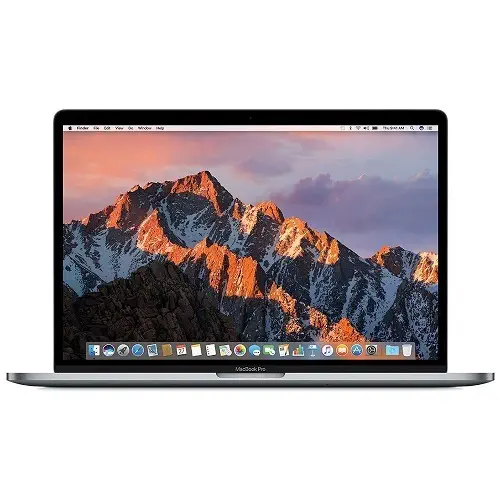Understanding macOS Screen Savers: A Technical Deep Dive

Categories:
4 minute read
Screen savers have evolved from their original purpose of preventing phosphor burn-in on CRT monitors to become an aesthetic element of modern operating systems. Let’s explore how they function on macOS, their system impact, and their location within the OS architecture.
System Location and File Structure
macOS screen savers are stored in two primary locations:
System Level:
/System/Library/Screen Savers/This directory contains Apple’s default screen savers, including classics like Flurry and newer ones like Aerial. These files are protected by System Integrity Protection (SIP).User Level:
/Users/[username]/Library/Screen Savers/Custom screen savers installed by users are stored here. This directory may need to be created manually if it doesn’t exist.
Screen savers use the .saver extension, which is actually a bundle (directory) containing all necessary resources. You can examine the contents by right-clicking and selecting “Show Package Contents.”
Screen Saver Size and Resource Usage
Modern macOS screen savers vary significantly in size and resource consumption:
- Basic Geometric Patterns (e.g., Message, Shell): 1-5MB
- Photo-based (e.g., Photo Library): 5-20MB depending on cached images
- Complex Animations (e.g., Aerial): 100MB+ with cached video content
The Aerial screen saver, particularly popular among users, downloads 4K video content that can occupy several gigabytes of storage over time. These files are stored in /Users/[username]/Library/Containers/com.apple.ScreenSaver.Engine.legacyScreenSaver/Data/Library/Application Support/Aerial/.
Resource consumption varies by type:
CPU Usage:
- Simple patterns: 1-5% CPU
- Photo slideshows: 5-15% CPU
- Video-based: 15-30% CPU
Memory Impact:
- Basic screen savers: 50-100MB RAM
- Photo-based: 100-300MB RAM
- Video screen savers: 300MB-1GB RAM
GPU Usage:
- Simple patterns: Minimal
- Photo transitions: Moderate
- Video playback: Significant, especially at 4K resolution
Moving Screen Savers and Animation Types
macOS supports several categories of moving screen savers:
Vector-Based Animations
These screen savers use mathematical algorithms to generate patterns. Examples include:
- Flurry: Creates flowing, plasma-like effects
- Message: Scrolling text with customizable messages
- Shell: Displays moving geometric patterns
Video-Based Animations
These screen savers play pre-recorded or streaming content:
- Aerial: Shows Apple TV aerial footage
- National Geographic: Displays nature video loops
- Custom video screen savers
Photo-Based with Motion
These combine still images with motion effects:
- Ken Burns: Applies pan and zoom effects to photos
- Photo Library: Transitions between images with various effects
- Shifting Tiles: Creates mosaic effects with photos
Additional System Locations
The /Library/Application Support/com.apple.idleassetsd/Customer/ directory is significant for screen saver assets, particularly for MOV-based screen savers. This location stores:
- Downloaded video assets
- Cached screen saver content
- User-specific motion backgrounds
- Dynamic wallpaper resources
MOV-Type Screen Savers
MOV screen savers have distinct characteristics:
- Technical Specifications:
- Codec: H.264/HEVC
- Container: QuickTime (.mov)
- Resolution: Up to 4K (3840x2160)
- Frame Rate: 24-60 fps
- Resource Impact:
- Storage: 200MB-2GB per video
- Memory: 400MB-1.2GB during playback
- GPU: 20-40% utilization for 4K content
- System Integration:
- Uses AVFoundation framework
- Hardware acceleration when available
- Automatic quality scaling based on system capabilities
To maintain optimal performance with MOV screen savers:
- Clear
/Library/Application Support/com.apple.idleassetsd/Customer/periodically - Monitor storage usage in this directory
- Use system tools to manage cached content
For custom MOV screen savers, ensure videos are optimized for:
- Efficient codec usage
- Appropriate bitrate for display resolution
- Smooth loop transitions
- Compatible color space (Rec. 709/sRGB)
System Integration and Performance Optimization
macOS employs several techniques to manage screen saver performance:
- Dynamic Resource Allocation
- Screen savers receive lower process priority when running
- System automatically adjusts quality based on available resources
- Animation frame rates adapt to system load
- Power Management
- Screen savers respect system power settings
- Different behavior when on battery vs. plugged in
- Automatic suspension during high CPU/GPU load
- Multi-Display Support
- Independent screen saver settings per display
- Synchronized activation across displays
- Resolution-aware scaling and performance adjustment
Customization and Development
For developers and advanced users, macOS screen savers can be customized:
defaults write com.apple.screensaver moduleDict -dict path -string "/Users/[username]/Library/Screen Savers/Custom.saver" type -int 0
Screen savers can be developed using:
- macOS Screen Saver Framework
- Metal or OpenGL for graphics
- AVFoundation for video content
Impact on System Performance
The impact of screen savers on system performance varies:
- Storage Impact
- Basic screen savers: Negligible
- Video-based: Can grow to several GB
- Cache management important for video screen savers
- Battery Life
- Simple patterns: 5-10% additional drain
- Video playback: Up to 30% increased power consumption
- Network usage for streaming content
- System Resources
- Background processes may be affected
- Potential thermal impact during extended use
- Network bandwidth consumption for online content
Best Practices
To optimize screen saver performance:
- Regular Maintenance
- Clear cached content periodically
- Update screen savers with system updates
- Monitor resource usage
- Configuration
- Adjust activation timing appropriately
- Match complexity to available system resources
- Consider power source when selecting screen savers
- Custom Installation
- Verify screen saver sources
- Back up original files before modification
- Test performance impact before deployment
Understanding these technical aspects helps users make informed decisions about screen saver selection and configuration while maintaining system performance and stability.
Feedback
Was this page helpful?
Glad to hear it! Please tell us how we can improve.
Sorry to hear that. Please tell us how we can improve.